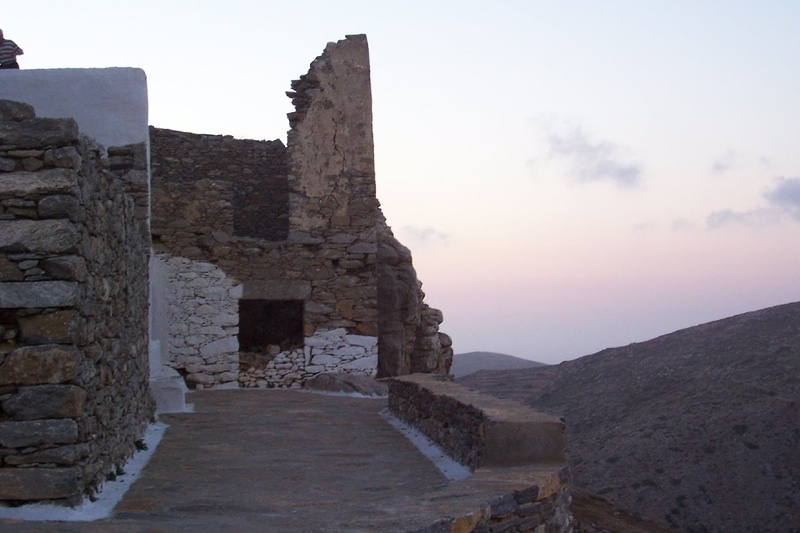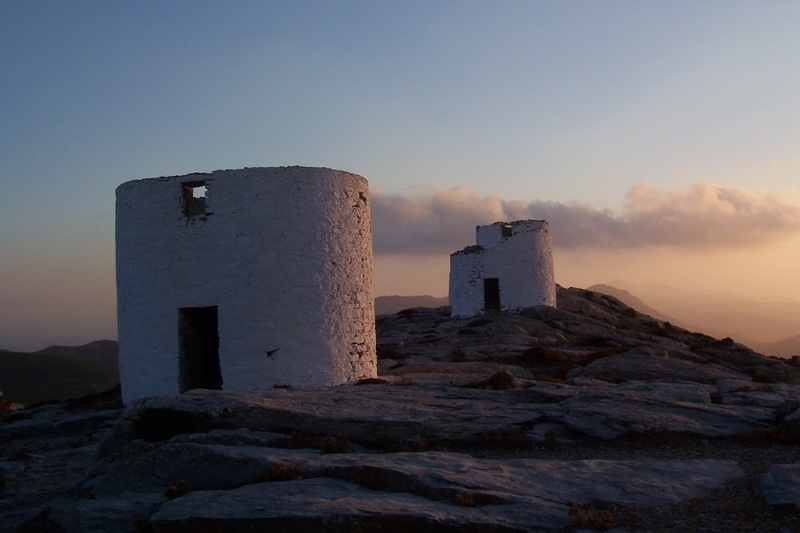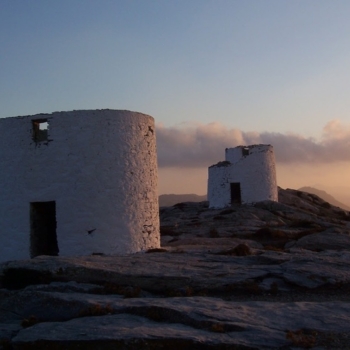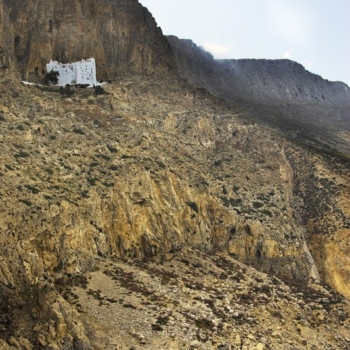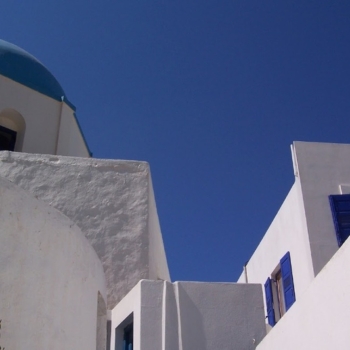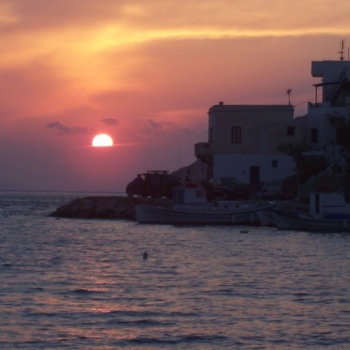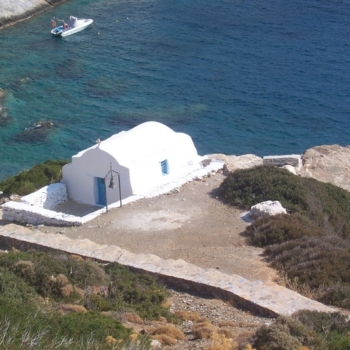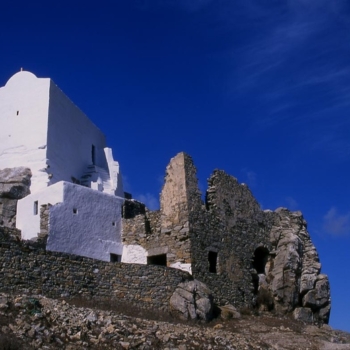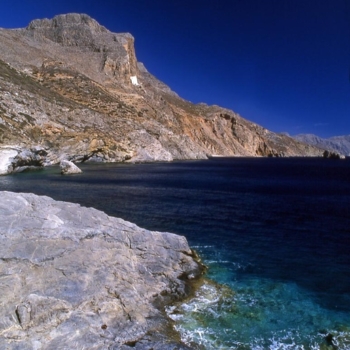Visible from ancient Minoa and Profitis Ilias (698m), unseen from the sea, Chora of Amorgos encloses the hill with its castle, it extends up to the main asphalted road which surrounds it, it controls land and sea routes, it “makes peace”, as in the past, between Kato Meria and Aegiali, since all the paths and the roads towards the two edges of the island pass from here.
All the summer visitors, sooner or later, end up here: in square Agion Panton, Platisteno, Plateaki, Loza and the windmills stretching in Troullos. The wanderings in the maze of the narrow alleys, from Vorina up to Vlycha and Kato Gitonia, rarely bring you to the same places –there is always an alternative road and always something will make you stand puzzled for a bit.
The naturally fortified, rocky, salient stands out above the whitewashed houses and the ascent up there is an amazing experiencre. Agios Georgios plays the role of the gate for the castle with the slippery rocks, the embrasures, the low surrounding wall and the panoramic view. Going uphill you will find the chapel of Kyra Leousa (or Kera Leousa). The oldest church in Chora, Agios Konstantinos and Ai Giannis Theologos.
IN THE NORTH
In the neighborhoods of Chora there are alleys, stais and arched arcades –the ‘emprostiades’. Spectacular elements of folklore architecture are preserved in Vorina district, in the two-storey residences with the very narrow “front”, the characteristic ‘krevati’ and ‘apokrevati’ (storage spaces under the bed for the cereal).
Vorina is the oldest district in Chora, built on the foot of the castle. It is here that the more ancient residential remains of the 3rd millennium were found. In every step you take you will discover ruined and restored houses that were stuck with each other forming a complex residential system, while at the same time they communicated with secret passages to ensure a way out towards the castle. You will also see oil presses and wells. In the district the historical building of the old ‘scholarchio’ (old type of school) stands out, on Exarchopoulou Street, which is now used as a junior high school built in 1829. Behind the junior high school there is Fotodotis Christos, a Byzantine church and once a dependency of Hozoviotissa. It is surrounded by a cell and warehouse complex and it has murals of exquisite art.
IN PLATISTENO
Platisteno (or Mesi Odos), the paved main alley that was built during the Venetian rule, is the “backbone” of Chora. Here there were always commercial shops and traditional cafés. Today taverns, coffee bars, shops with souvenirs, clothes and accessories are lined here, but also some of the major attractions of Chora such as the famous Tower of Gavras which houses the Archaeological Collection and beside it the Byzantine church of Zoodochos Pigi.
Walking through Steno you will find Plateaki in front of you with the three small, white churches (Agios Thomas, Agios Tharraleos and Stavros) and will arrive at Ano Plateaki. You will see the church of Agios Ioannis and the tiny chapel of Agia Irini which claims the title of the smallest chapel on the island. From there you can walk towards Emprostiada or Tholos, the main eastern entrance of the settlement during the Venetian rule . Stuck in Tholos lies the House of Excavation, in a great building of the 16th century. After Tholos you pass to Fotodotis and Kalogerikos areas.
If you continue straight on Platisteno, you will pass by the post office and the church of Agia Triada (Holy Trinity) to reach Pano Gitonia. Turning left you will go to Kalogerikos and the schools, while continuing to the right and climbing the stairs on your left, you will reach the mills.
The square of Kalogerikos is one of the most beautiful balconies in the Aegean and a rendez-vous point for many years. It offers incredible views-especially at nights with moonlight. Exiled leftists and couples have engraved their names on the rocks. The cobblestone path towards Hozoviotissa passes underneath.
Ιnfo
– Loza, the Venetian square of Chora, is where events, festivals and celebrations always took place. The main church (Kimisi Theotokou -Assumption of the Virgin Mary) is located here, the building of the Police station and the old municipal office. From Loza you can go uphill towards the castle with its churches, or go towards the bus square.
– The mild tourist development of Chora with the small hotels, rooms to let, restaurants, taverns, cafés, bars, gift shops etc. began in the 80s respecting the character of the beautiful settlement.
– Amorgos has gathered many political exiles from 1917 onwards-rightists, leftists, criminals. The presence of the leftists ‘initiated’ the locals into leftist ideas. It was not included in the exile places during Metaxa’s time, but individual deportations took place during Junta (military dictatorship).

